Sculpting a fórcola
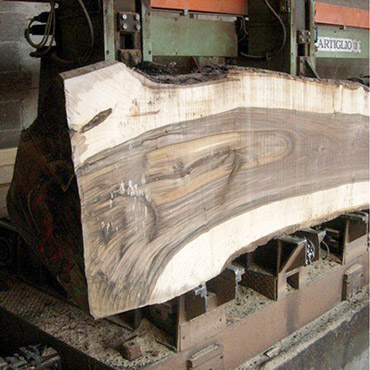
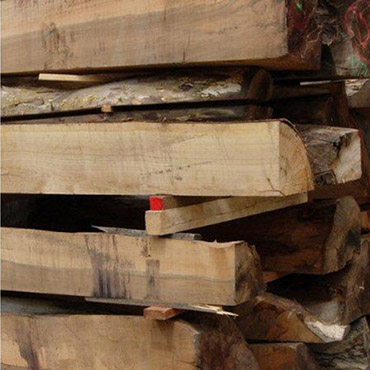
The raw material
A tree trunk is cut into quarters lengthways. For stern fórcole used on gondolas, trunks with a diameter of 60cm, usually walnut, are used.
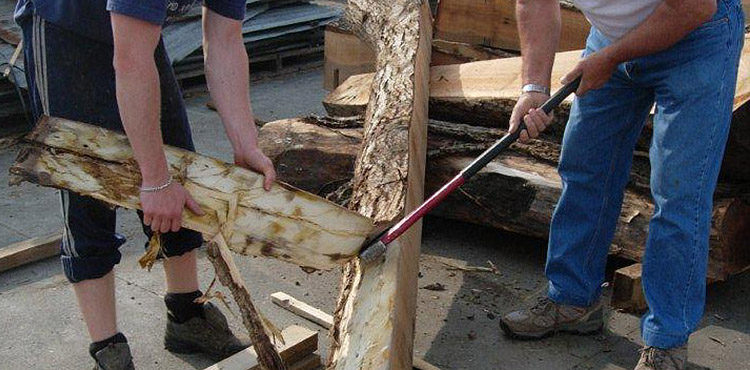
Preparing the trunk
While still fresh, they are cut into quarters and the bark removed. Left to season for two years, they are cut into 1m lengths.
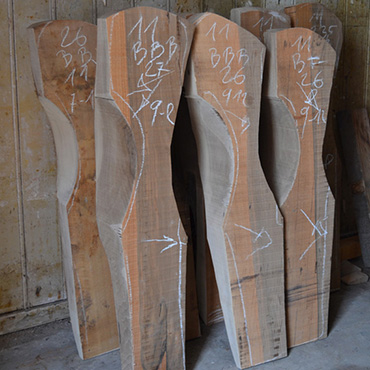
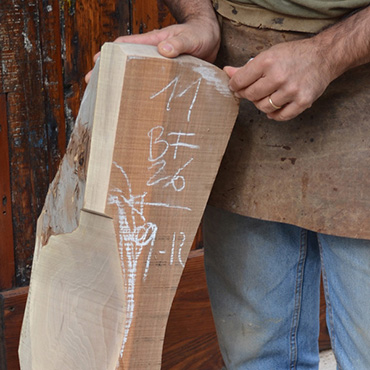
Rough-cut blocks left to season
Cutting the forcola in this way allows the wood to dry more thoroughly.
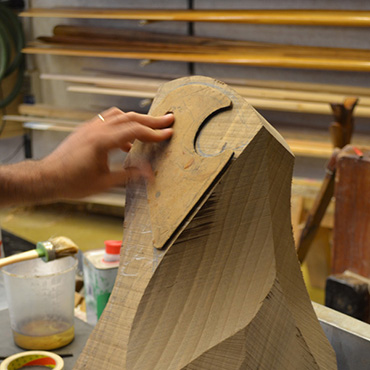
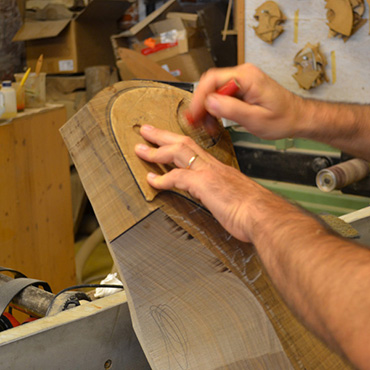
Tracing the 'head'
TWhen a client places an order, the rough cut forcola is chosen whose size and characteristics are best suited to that particular client.
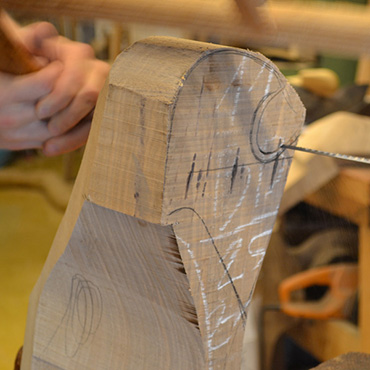
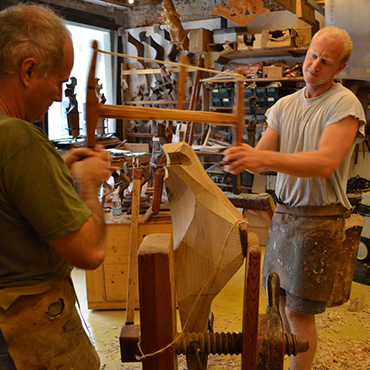
Using the framesaw
The most delicate cuts are made using the framesaw.
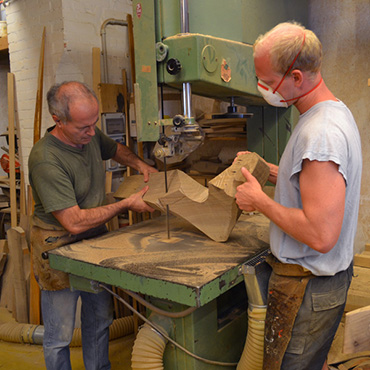
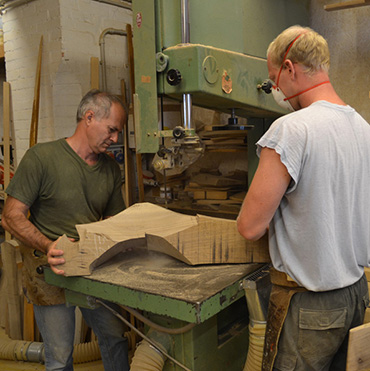
Using the bandsaw
Further shaping is carried out using an electric bandsaw.
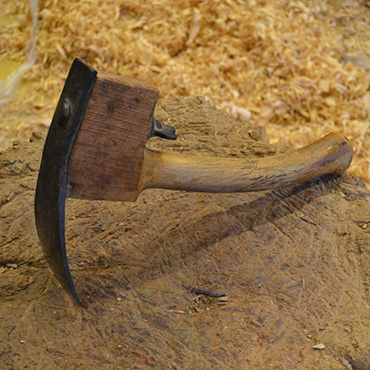
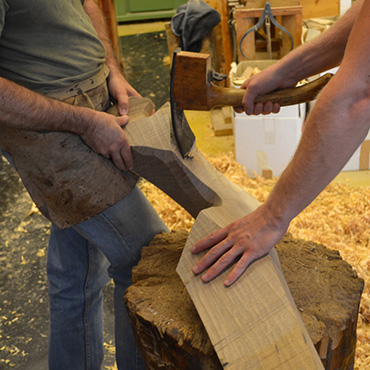
The remèr's axe
For the parts that the bandsaw cannot reach, this ancient tool - the remer's axe - is used.
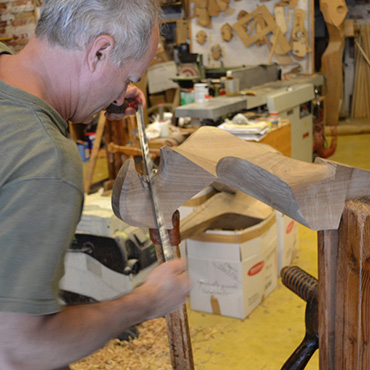
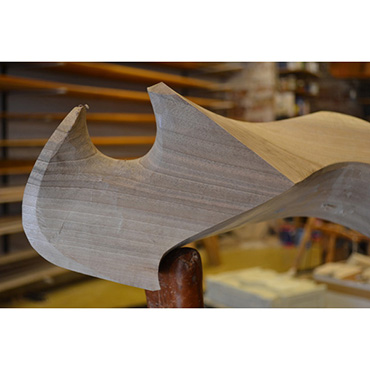
Working with the ferri a due manici
Next, the morsa is shaped using drawknives called ferri a due manici. These come in a variety of widths which are used according to the amount of wood to be removed and the size and shape of the curves to be sculpted.
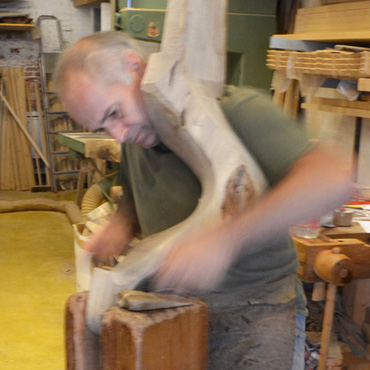
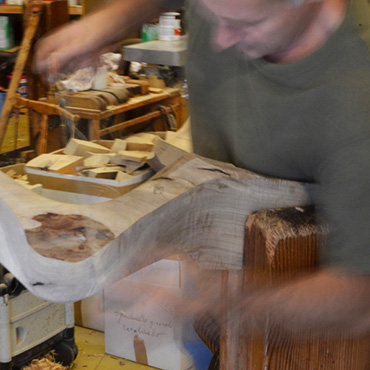
Wrestling with the fórcola
The next stage consists of continual sculpting and checking by eye. At times the remèr appears to be wrestling with the fórcola.
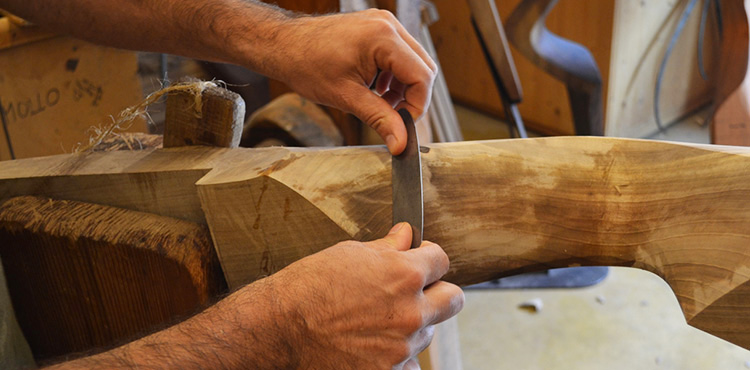
The raschietto
When the shape and the surfaces are ready they are smoothed with a metal scraper and sandpaper
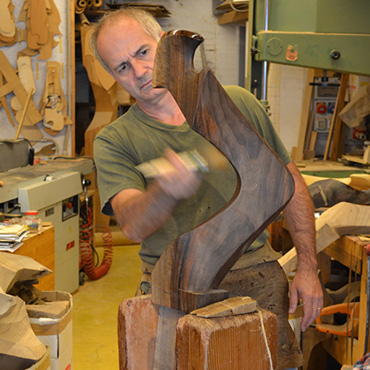
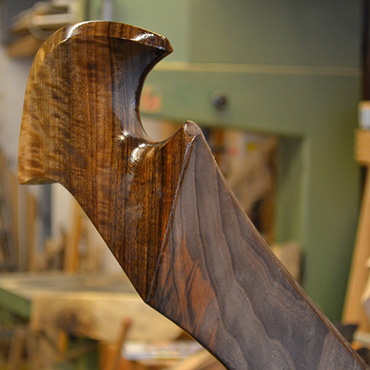
Applying straw oil
The forcola is finished with several coats of diluted straw oil
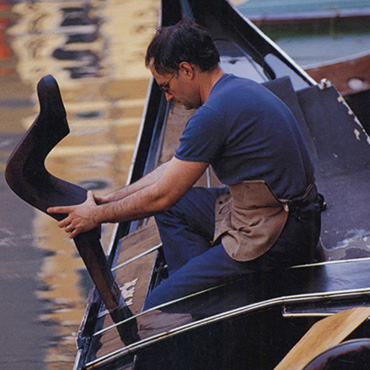
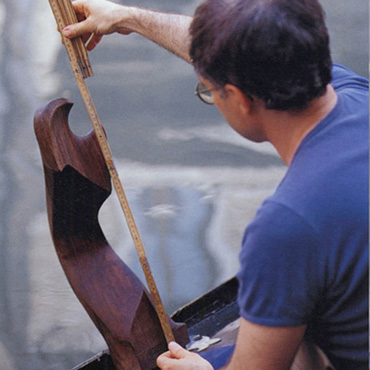
Fitting the fórcola
La fórcola is adjusted to fit the slot in the side of the boat and is then numbered and signed